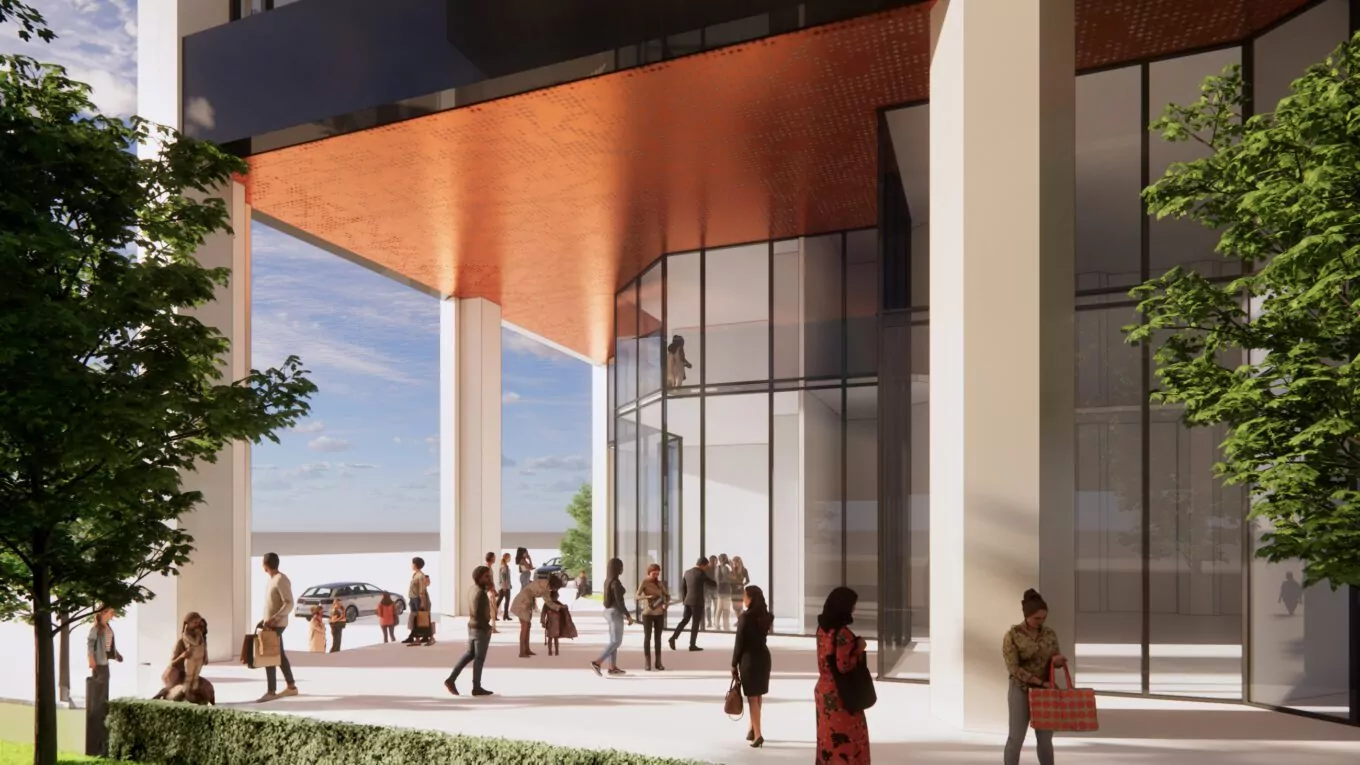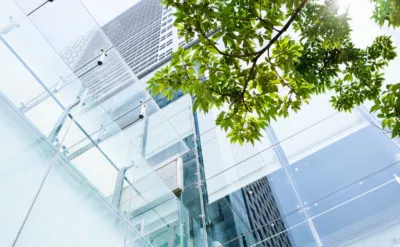The lingering impacts of the pandemic have been a key driver for reimagining our relationship with the built environment and is presenting new opportunities across portfolios and sectors. With a surplus of office space resulting from evolving workplace strategies, owners in conjunction with teams of developers, city planners, architects and engineers are actively managing a variety of complex office building conversions into viable living spaces.
But not all office buildings are candidates for conversion. A feasibility study is required to assess the economic, aesthetic, environmental, structural, engineering and market viability for a successful conversion. Consideration must also be given to livable residential uses that range from apartment rentals and condos to attainable housing and hotels.
In this Insight Article, we provide our perspective on key drivers and considerations that are shaping the transformation of commercial office buildings to livable spaces based on our experience leading more than 20 conversion projects completed, under construction or in design.
- Economic Viability
The staying power of hybrid and remote work is presenting a real challenge for commercial office owners and developers. While the world is still learning how to manage post-pandemic, the reality remains that a percentage of existing office buildings are finding economic renewal in converting to livable or mixed-use spaces.
Eroding tax bases due to vacant office buildings can be a lightning rod for adaptive reuse in downtown cores. City planners and local municipalities often greenlight office conversions far faster than new builds to secure a stable tax base. Tax incentives for market-rate and attainable housing also contribute to the benefits of repurposing commercial space and offer developers more avenues to realize economic viability.
These measures help municipalities realize their ultimate goals of returning residents to the city’s most vibrant places. Activating dormant commercial neighborhoods and reigniting downtown cores only happens with more densification. Existing office buildings are often near transit hubs and retail centers, making them an attractive option for livable use. Location is key and walkability is high on the list to command desirable units for future tenants.
While each region and municipality has planning approvals and guidelines for such conversions, most cities in North America are offering incentive programs to drive economic recovery in the core. These incentive programs vary based on specific goals.
The UK announced a provision through Class O Permitted Development Rights. This provision removes the requirement to make a formal planning application as development is automatically deemed approved, with the exception of listed buildings of historic interest. These projects are provided with a certificate of lawfulness, usually prior to development, which enables them to be funded or mortgaged, and work can progress in very short timeframes.
- Environmental and Carbon Considerations
Converting existing office space to residential-type units often requires adapting existing plumbing, electrical, mechanical and building systems – and in some cases, an entirely new building envelope. Not only do these enhancements improve the energy performance of the existing building, but they help to lower the operational carbon over time, therefore reducing the carbon footprint of the building.
The carbon-reduction effect on the environment by repurposing rather than demolishing or rebuilding cannot be overstated. As architects and engineers, we have a great responsibility for a sustainable future. With aligned interests, a carbon emission analysis at the start of a project informs decisions to reduce both embodied and operational carbon. As energy costs increase in response to climate change the repurposing of existing structures begins to make greater economic sense.
- Location, Characteristics and Structural Integrity
The location of the target building will have a dramatic effect on its suitability for conversion. The neighboring infrastructure is critical to the initial selection of a suitable conversion.
Many office buildings are simply not suited for residential adaptation. Large commercial office floor plates (10,000 SF2 / 1000 SM2 or greater) result in lightless cores, outdated electrical, plumbing and HVAC systems – all contributing to a costly and exhaustive undertaking. These buildings may be suitable for other adaptive uses with more open floor plan characteristics. However, if development proformas pencil-out, creative solutions are available for most repositioning challenges. Often, smaller and older buildings offer more manageable space for conversions and come equipped with features like higher ceilings and larger windows that are highly desirable for residential use. Hotels are arguably even more appropriate for conversion to senior residences or attainable housing models.
Historically significant buildings may also be able to take advantage of preservation funding which will assist the economics of the conversion and add to the urban fabric of older neighborhoods.
Preparation and pre-analysis of the existing structure is imperative. Once the basics are understood it is a matter of building flexibility into the design layout, ensuring minimal shifts to the core to avoid compromising the structural integrity. Post tension structures can be particularly challenging as are several other systems including clay tile slabs and other older structures. An integrated design approach with a deep knowledge of the systems and understanding of the market conditions of residential planning metrics is paramount to a repositioning success.
Modern technologies like laser scanning and 3D point-cloud modeling mean a faster, less intrusive way to work with existing structures. As we continue to find new ways to repurpose buildings for multiple sectors, the lessons learned are transferable from each conversion project.
- Market Trends and Social Impact
Residential design excellence provides personalization and pride of place, and the flexibility for different living patterns and household demographics. Premium amenity spaces must be integrated using open areas with direct connections to circulation spaces (stairs, elevators, entrance lobbies, mailrooms, etc.). Fortunately, many older office buildings have amenity spaces that can easily be converted for residential users and may be conveniently located to other neighborhood amenities. This is very much about supporting and fortifying the idea of a 15-minute neighborhood as urban cores continue to repopulate creating livable, walkable, sustainable neighborhoods.
It is incumbent of any conversion project to respect the adjacent neighbors, yet firmly establish itself with the ideals of its new identity, knitting itself into the existing architectural characters of the streetscape and surrounding fabric. Fostering diversity and inclusion of tenants and space types will support thriving micro-communities and evoke an excitement that will draw people in. Developments have not been without their controversy when space standards, amenities and quality of space are not properly considered. When approached responsibly, conversations can provide an answer to what to do with unoccupied buildings, how to reduce the use of embodied carbon and help provide a solution to the shortage of quality housing within our urban centers.
The conversion of commercial buildings can be viewed as filling the gap, or could be a trend that advances livable communities, but it is a reminder that flexibility is needed to respond to our evolving world. As long as the need for housing abounds, we all have accountability to investigate existing opportunities.
Learn more about how to approach a conversion by starting a conversation with our team.



